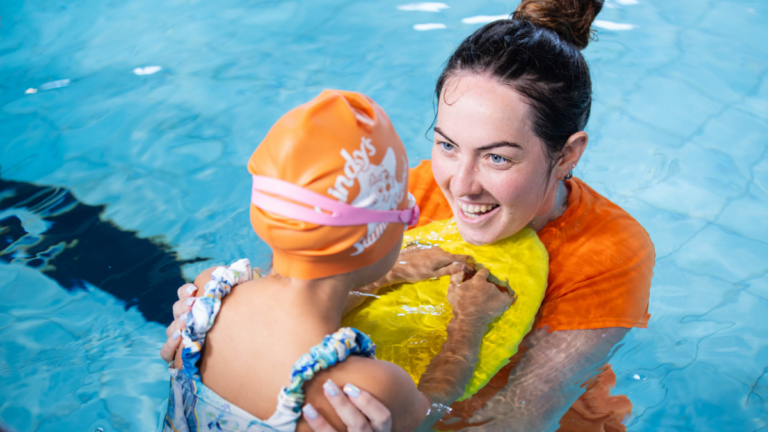Ever wondered how long it really takes to learn to swim?
It doesn’t matter whether you’re a child or an adult, the truth is, there’s no one-size-fits-all answer.
Learning to swim is a journey that’s unique to each individual, influenced by factors like comfort in the water, age, learning style, and personal goals.
This article dives into the various elements that affect how long it takes to learn how to swim, from overcoming initial fear to mastering different strokes.
We’ll explore Cindy’s Swim School’s unique approach to teaching, with tailored programs for babies, children, and adults. And if you want to know exact timelines for you or your child – we’ve got straight answers to that too!
Frequently Asked Questions
Click the question to jump to our answer!
- What does ‘Learning to Swim’ mean to you?
- Which factors influence how long it takes to learn how to swim?
- How long does it take for children to learn how to swim?
- How long does it take for adults to learn how to swim?
- How long does it take to master advanced strokes?
- How long does it take to feel comfortable swimming?
- Are there any tips to help you learn to swim quickly?
What does ‘learning to swim’ mean to you?
At Cindy’s we believe you are always learning, so defining what you want to learn is an important step in planning success.
How long it takes to learn how to swim depends on how you define success. Is it swimming 10 or 25 metres freestyle confidently, or does it involve mastering different strokes, or even competing in an event? Defining clear goals helps set expectations for the learning process.
Our team of passionate and helpful teachers are always ready to help their swimmers achieve their goals. No goal is too small or too big!
Factors affecting how long it takes to learn how to swim
Of course there are many variables which affect how long it takes each person to learn how to swim. It depends on:
- Fear / confidence in water
- Age and learning speed – children vs adults
- Consistency, practice and frequency of lessons
- Motivation / attitude
- Swimming instructor & learning environment
As swimming is a life skill, it can affect people on a profound level. This explains why young children instinctively are scared and cling to their swimming teachers or parents. In adults, it can exhibit as stiff muscles, anxiety, panic attacks or in various other ways.
Some swimmers get in on their first lesson, and within a few minutes are splashing up and down the pool, like they’ve been doing it for years. Others are cautious and take longer to relax into the water. Our teachers at Cindy’s are passionate and genuinely want all their swimmers to have the best swimming journey.
Don’t worry if you are nervous. Keep a positive attitude, communicate any worries to your teacher and trust them to guide you gently when you feel scared. If you don’t understand something or aren’t getting a certain exercise, don’t hesitate to ask. Everyone learns differently and our teachers can teach exercises in different ways to make them accessible to all our swimmers.
How Long Does it Take to Learn How to Swim for Children?
At Cindy’s we follow teaching programmes based on age and development – both physically and cognitive – and so we have different expectations about learning timelines. Here is some information and links so you can see what we expect babies and children to achieve with consistent weekly lessons.
Babies (Up to 24 months)
Our baby classes are separated according to age. Baby 1 classes are for 6 weeks to 10 months, baby 2 classes teach 10 to 18 months, baby 3 classes are for 18 to 24 months.
Baby 1 classes teach babies to swim with adult support, noodles and back floats. Baby 3 classes can include swimming with floats and noodles as well as unaided.
Our swimming stages for babies on stages 1 to 3 show a list of what babies can acheive during their swim lessons. Each stage takes two to three terms to complete.
Preschoolers and School Age Children
Cindy’s has a swimming stages programme for preschoolers to teenagers. We use this to we measure and reward the progress of our swim school learners. Each stage of the programme includes both distance and skill-based requirements.
Children who complete swim stage 1 can swim 5 metres and swim stage 10 is for students can swim 1000/1500 metres! Find details of our swimming stages here.
Timeline
The timelines are as follows:
Stage 1 – Stage 3
Each stage lasts about 2 terms (6 months)
Stage 4 – Stage 10
Each stage lasts about 3 terms (1 year)
How Long Does it Take to Learn How to Swim for Adults?

As an adult, learning how to swim also follows a basic timeline which is detailed below:
Basic Swimming Skills
Floating and water confidence
- Learning how to swim with a float on the front and back
- Being able to float unaided on the back and front
- Being able to submerge under the water confidently
Kicking
- With and without floats
- Learning foundation streamline position
Breathing techniques
- Learning to breathe properly in the water
- Learning rhythmical breathing to be used for different strokes
Basic swimming strokes
- Front crawl and backstroke
- Learning basic arm technique for each stroke
- Swimming basic strokes with floats and unaided.
Timeline
These stages can take anywhere from a few lessons to several weeks, depending on the factors mentioned above. At Cindy’s, in an ideal situation, we would expect a swimmer to achieve some or most of these skills within 3 months.
Additional and More Advanced Swimming Strokes
Once you have learned the basics of front crawl/freestyle and backstroke, you can take an advanced class to strengthen your stroke. This class introduces advanced techniques for front crawl/freestyle and backstroke. It also introduces breaststroke and butterfly. These strokes are more technical so harder to master but they give the swimmer a more satisfying swimming experience, and the skills to pursue other water activities and sports.
Front Crawl/Freestyle and Backstroke progressions
- Learn advanced arm and stroke techniques
- Work on streamline breathing
- Improve starts, turns and finishes
Introduction of Breaststroke and Butterfly
- Learn the basic technique for each stroke
Deep end introduction and sculling
- Introduce sculling and other water safety skills
- Introduce deep end to swimmers
Diving
- Introduce basic diving and advanced progressions
Timeline
Layering advanced techniques on basic front crawl and backstroke foundations can take time. It’s not just technique that the swimmer needs to master, but also endurance, which comes from building muscle and muscle memory. Generally we expect some decent headway within 6 months.
Reaching a Comfortable Level of Swimming
Reaching a comfortable level of swimming opens up a world of fun and fitness, but it also takes time. Most swimmers at this stage will have been bitten by the swimming bug, and so maintaining a swimming fitness becomes part of their weekly exercise routine. If you don’t use it, you lose it, so regular swimming is a must if you want to maintain or increase your fitness levels. This is where swimmers are spoilt for choice!
There are numerous ways to keep swimming fit, the most common ways are:
- Joining a weekly masters/fitness swimming group. These can be found at local leisure centres, private swim schools or clubs. Private swim schools or clubs will also sometimes host and compete in their own competitions, to keep their swimmers motivated.
- Enter into a triathlon or swimming competition, or sign up for a charity swim. How you choose to train depends on your level of commitment and whether you are happy to swim alone or would prefer to swim in a group. There are many triathlon training programs available online if you would prefer working independently. Alternatively, joining a triathlon group, or a fitness group can give you the push you need.
- Try something different like open water swimming. Look out for a local lido, or river that allows open water swimming. If you’re lucky enough to live by the sea, go for regular ocean swims. The health benefits are through the roof, but always ensure that it is safe and that someone knows where you are. Better yet, go with a swimming buddy.
Timeline
How quickly your fitness improves is unique to each individual. If you have any concerns or questions, be sure to talk to your coach. They have a wealth of knowledge and experience. This stage is all about integrating swimming into your lifestyle, so for as long as you enjoy and want to be swimming fit, it should be a part of your day to day life.
Tips to Help You Learn How to Swim Quickly
- Find a good instructor
- Set a SMART goal – I’ll learn to swim 10 or 25 metres by this date. Make a note of the progress you make will help keep you motivated.
- Work on the basic techniques independently (breathing, floating, kicking)
- Stay positive / motivated. Work on attitude.
- Use drills
- Practice and have lessons consistently
- Spend time in the water to help overcome fear and anxiety
- Have fun!






